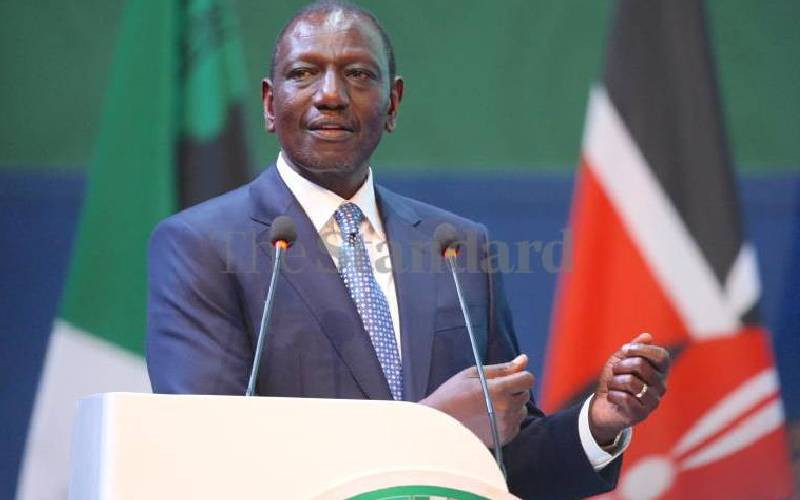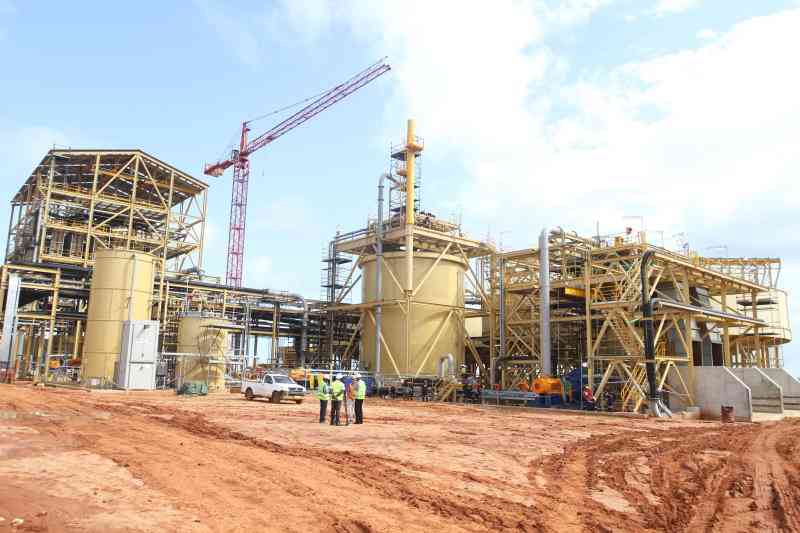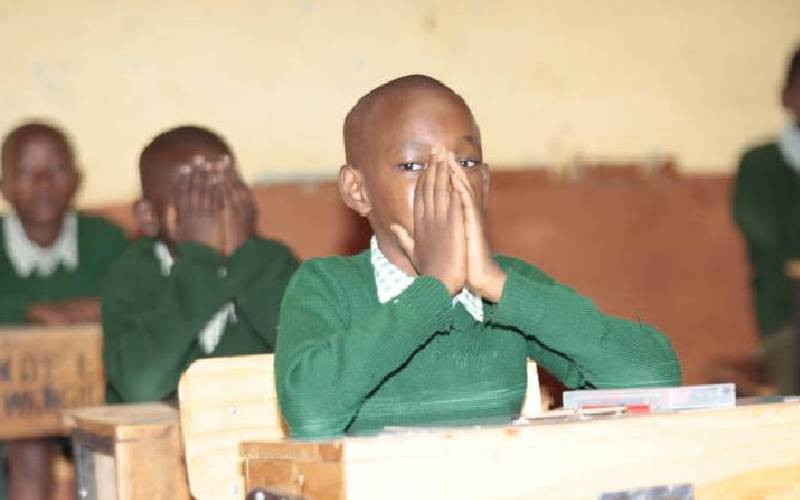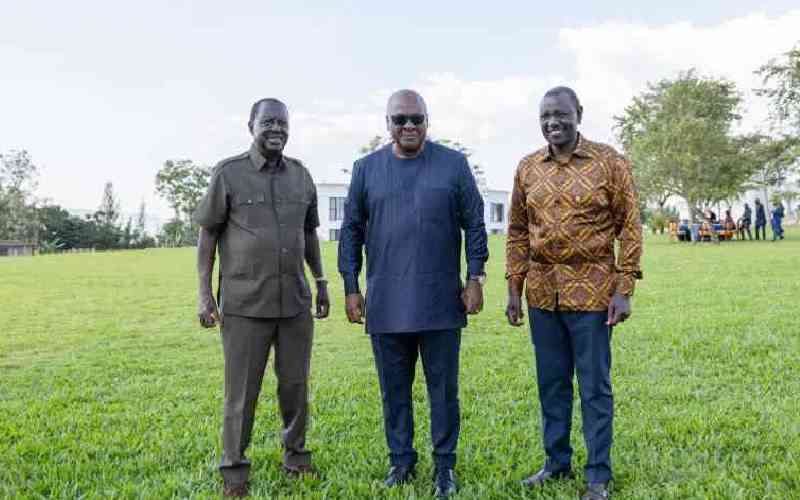Base Titanium, a wholly-owned subsidiary of the Australia and UK-listed company Base Resources, is developing the Kwale Mineral Sands Project in Kwale County.
Construction at the site, which is about 50 kilometres south of Mombasa, was completed at the end of 2013 and the first bulk shipment of ilmenite — the most important element of titanium — sent to China in February this year.
Titanium is used in manufacturing surgical equipment, paint, paper, aircraft and sporting goods, among other things.
Regular shipping
The firm has established regular export of three high-value minerals from Kwale. It will ship 330,000 tonnes of ilmenite; 80,000 tonnes, or 14 per cent of the world’s rutile (another element in titanium); and 30,000 tonnes of zircon (used in making ceramics) each year over a 13-year mine-life.
The Kwale project is expected to deliver approximately $225 million (Sh20.3 billion) in tax and royalty payments over the life of the mine.
Business Beat caught up with Joe Schwarz, the general manager, external affairs and development, to discuss the firm’s prospects. Mr Schwarz grew up and went to school in Kenya. He has experience in the mining industries in Congo, Zimbabwe, Zambia, South Africa and Brazil.
What do you think about the investment climate in Kenya?
There is a lot of room for improvement. Kenya certainly has many of the right policies in place, but still needs to implement them through initiatives like streamlining licensing.
Other inhibiting factors that need to be addressed include the cost of doing business, insecurity, infrastructure and corruption.
It is also important to create a competitive, stable and secure fiscal and legislative environment, particularly for the mining sector. Few investors will come here if mining jurisdictions elsewhere with established track records offer a secure and more competitive investment climate.
With the creation of county governments, do you anticipate conflict between these devolved units and the central government as regards the exploitation of natural resources?
The Constitution is very clear on the division of functions. The administration of minerals is not devolved, so it is only the national government that is mandated to govern minerals in accordance with Article 62.
However, to ensure counties and local communities receive a fair fiscal return for the minerals found in their regions, the new Mining Bill proposes that 20 per cent of royalty revenue is distributed to the county government, with a further 10 per cent to the local community to be used for development projects. This should eliminate conflict between the national and county governments.
What do you think should be done to harmonise the relationship between the two levels of government to create a more conducive environment for investment?
Stay informed. Subscribe to our newsletter
Most importantly, ensuring laws and elements of the Constitution are implemented and upheld.
Also, all levels of government must respect the sanctity of existing contracts. These are legally binding documents and undermining them would have severe consequences in the context of investor confidence.
Is the national government giving county governments a raw deal when it comes to the issue of levying taxes on mineral resources?
The management and administration of minerals is vested with the national government, therefore, counties should not be levying taxes on mineral extraction activities.
The Constitution is clear on what kind of taxes and charges counties can raise. Besides, the new royalty-sharing formula in the Mining Bill will see counties receive a significant share of revenues from locally extracted minerals.
What effects do you anticipate Base Titanium having on the country?
The Kwale Mineral Sands Project will have several long-lasting effects.
First, the mine will generate a direct and regular stream of revenue for Kwale County and the local community once the Mining Bill is passed. This money will be collected by the Government and a portion allocated to the county for development projects.
Second, Base has spent Sh2.6 billion building infrastructure in Kwale County that will contribute to its economic development long after mining has ceased. This includes roads, power supply and a large water storage dam.
Third, the project has created significant employment opportunities for the people of Kwale. Currently, 60 per cent of our workforce is from the county and a total of 95 per cent are Kenyans.
Fourth, the project will create significant economic activity through the purchase of goods and services by both the company and our employees. This money is being pumped directly into the local economy and is creating additional jobs and tax revenues through indirect and induced contributions.
Finally, Kwale has benefited from our community development programmes. In the current financial year alone, we have set aside a budget of almost Sh350 million for community investment programmes in the areas of infrastructure, health, education and livelihood development. These programmes are identified and prioritised through community consultation and are aligned with the Kwale County Integrated Development Plan.
Do think the country appreciates the role the mining industry can play in the economy?
Not yet. At less than 1 per cent of national output before Kwale, the minerals sector is not a significant contributor to the economy.
However, since coming into production at the start of this year, Kwale is now doubling that contribution.
Other positive indicators from the project are increased export earnings, taxation and royalty payments, employment and skills transfer. This is the first big step in the sector becoming an important player in the socio-economics of the country.
In addition to the obvious direct benefits, the indirect benefits of a large mining operation cannot be underestimated. For instance, Base spends close to Sh6 billion a year in operating costs, 70 per cent of it in the country.
Kwale should serve as a model, a flagship that demonstrates how big mining can be in Kenya.
However, it will take another 15-20 years to build a broad-based mining industry that becomes a large contributor to the economy, and the policies put in place today should aim to make that a reality. Tanzania has done it in a gradual and measured way over the past 20 years, increasing the value of mineral output 10-fold since 1995.
What should be done to make the mining industry more inclusive?
The first thing is education to create a better understanding of the industry. Mining is very risky business; exploration takes time and money and often results in nothing of economic value being discovered. If a project proceeds to the development phase, large capital investment is required.
Even during the operational phase, there are risks associated with commodity prices.
Kenya’s financial institutions need to become more comfortable with the risks involved and will need a better understanding of the sector before they can commit to investing in mining projects.
Until this happens, large-scale mine development will remain reliant on international capital. It should be noted that a majority of exploration licenses are held by Kenyan companies, but they often lack the capacity to undertake major exploration.
[email protected]
 The Standard Group Plc is a
multi-media organization with investments in media platforms spanning newspaper
print operations, television, radio broadcasting, digital and online services. The
Standard Group is recognized as a leading multi-media house in Kenya with a key
influence in matters of national and international interest.
The Standard Group Plc is a
multi-media organization with investments in media platforms spanning newspaper
print operations, television, radio broadcasting, digital and online services. The
Standard Group is recognized as a leading multi-media house in Kenya with a key
influence in matters of national and international interest.
 The Standard Group Plc is a
multi-media organization with investments in media platforms spanning newspaper
print operations, television, radio broadcasting, digital and online services. The
Standard Group is recognized as a leading multi-media house in Kenya with a key
influence in matters of national and international interest.
The Standard Group Plc is a
multi-media organization with investments in media platforms spanning newspaper
print operations, television, radio broadcasting, digital and online services. The
Standard Group is recognized as a leading multi-media house in Kenya with a key
influence in matters of national and international interest.








